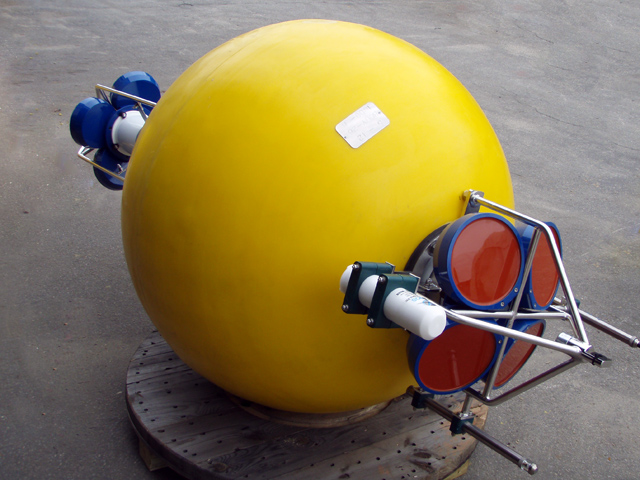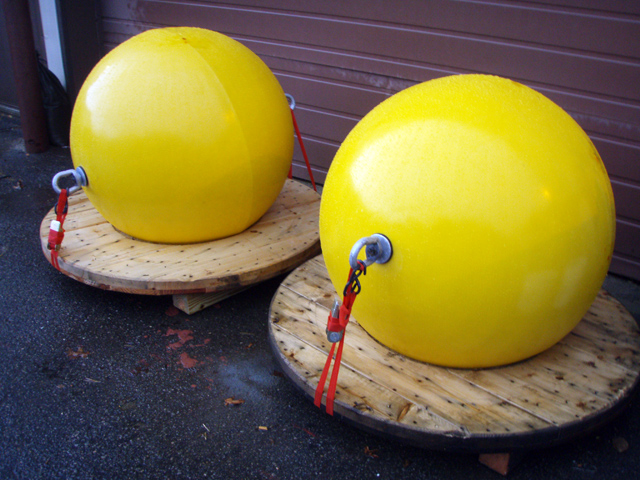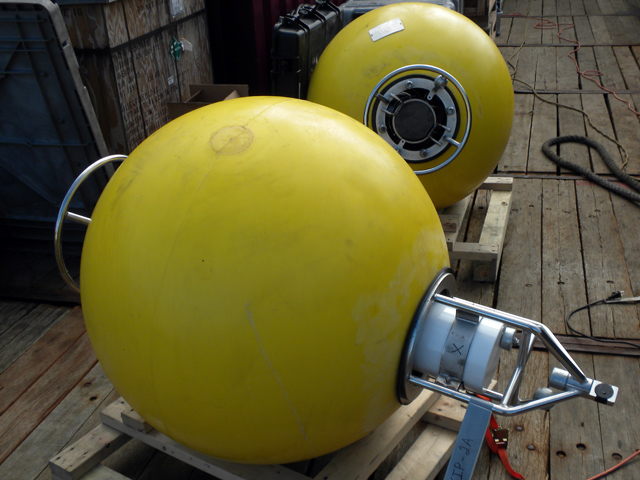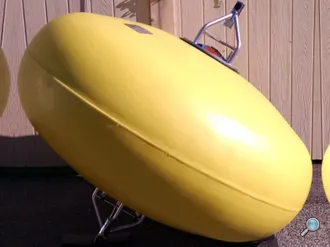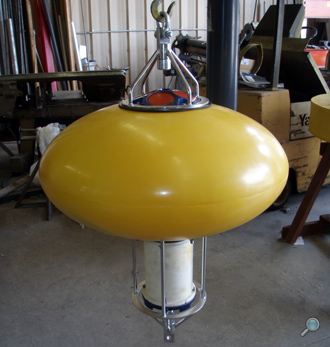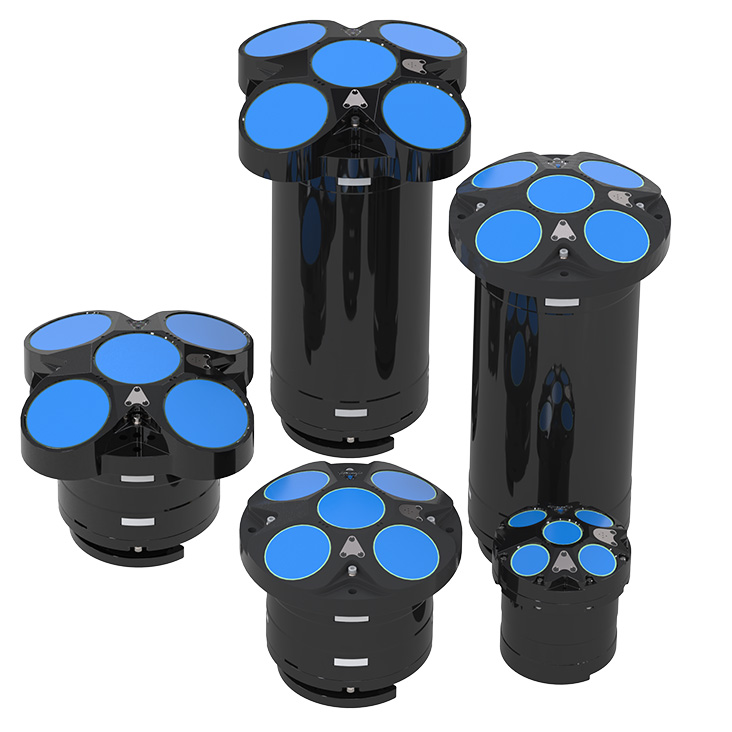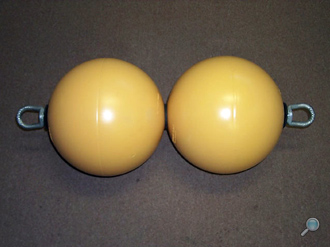BlueZone partners with over 50
world-leading original equipment
manufacturers and systems providers
Mooring Systems ADCP Buoys
SPHERICAL ADCP BUOYS & FLOTATION (SYNTACTIC)
Mooring Systems, Inc. manufactures spherical shaped subsurface buoyancy for ADCP buoy applications with integral stainless steel instrument mounting frames, or with single strength members for use as primary or back-up mooring flotation. Spherical buoys with internally mounted instruments will greatly reduce current drag and improve mooring performance. ADCP transducers and other sensors can be better directed up to the surface when mounted inside the well of syntactic buoys. Using a fewer number of floats by increasing the diameter of the float will also greatly reduce horizontal drag. The cross sectional area affected by ocean currents is smaller when using fewer larger floats with equal buoyancy to that of many small floats.
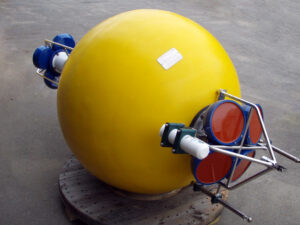
ELLIPSOID-SHAPED LOW DRAG BUOYS (SYNTACTIC)
Mooring Systems, Inc. manufactures an ellipsoid-shaped subsurface buoy that provides a lower drag coefficient than traditionally shaped spherical buoys. The ellipsoid buoy improves mooring performance by reducing lay down caused by water currents. Ellipsoid shapes are more predictable and have lower risk than other non-spherical buoyancy modules. Configurations are offered with single strength members as general mooring flotation, or with integral stainless steel instrument frames. During mooring recovery operations, ellipsoid-shaped buoys provide excellent vertical position of beacons, unlike spherical buoys with unbalanced instrument payloads that roll in ocean waves.
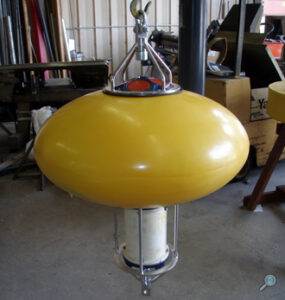
Contact the BlueZone sales team for more information.
Key Features
Up to 25-hour mission duration
Speeds up to 4.2 knots
Increased module payload capacity
Search and recovery
Hydrography
Deep sea mineral exploration
Marine & Fisheries research
Product Enquiry
Related products
The Workhorse Proteus ADCP from Teledyne RDI collects current and wave data, measurements of flow, transport, and discharge, in oceans, estuaries, and rivers.
Read moreMooring Systems Subsurface Floats
Mooring Systems, Inc. utilises plastic commercial fishing floats and steel floatation spheres for use in a variety of instrument mooring applications.
Read moreHardBall® Float Subsea Buoyancy
DeepWater Buoyancy’s Hardball® Floats provide subsea buoyancy for a wide variety of oceanographic applications.
Read moreRelated Articles
Ahead of the Tide: A Year of Milestones and Momentum- A Letter from the Director
By Neil Hodges, Managing Director, BlueZone Group As 2025 draws to a close, it’s a moment to reflect on a year that has been nothing short of transformative for...
Read MoreGlobal Journeys, Fresh Faces and Capability Growth That Sets the Stage for the Future For BlueZone Group, 2025 has been nothing short of transformative — a year defined by...
Read MoreSafer Summers: Innovation Beneath the Waves with ArtemisSAR and StarFish
The Advanced Sonar Systems Giving Surf Life Savers the Tools to Protect Lives with Greater Speed, Safety, and Confidence As we turn the page into Aussie summer, the rhythm...
Read More
